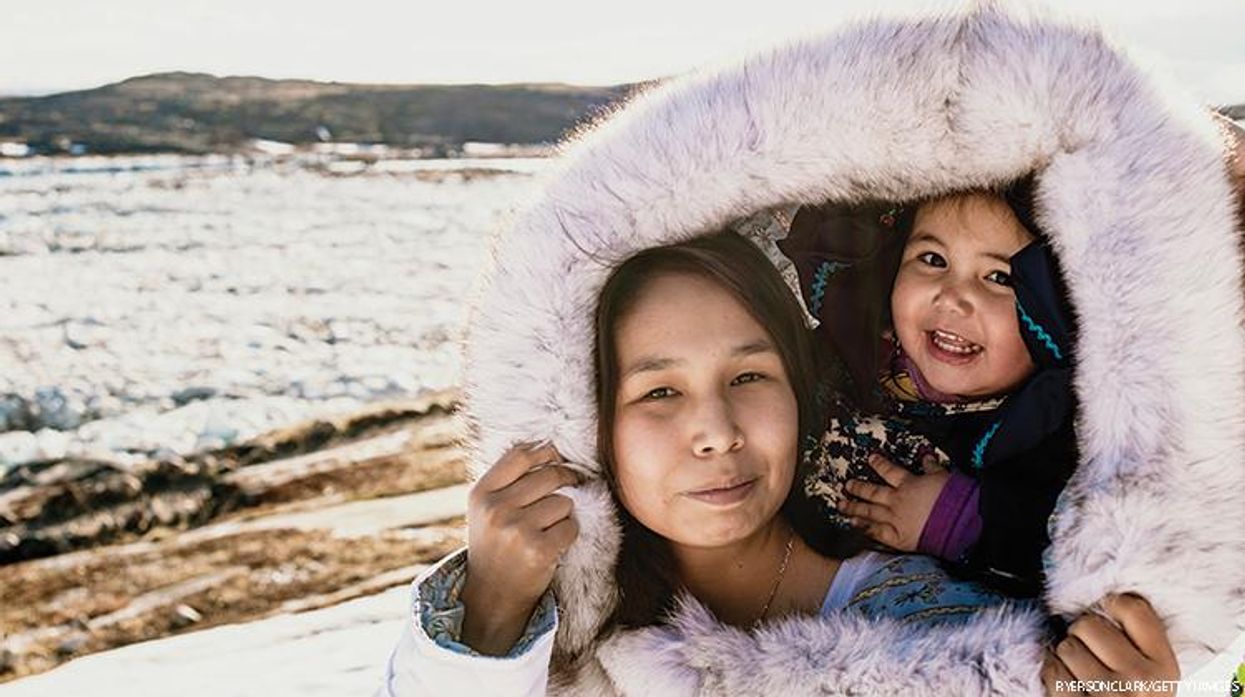Print Issue
Queer Climate Researcher on Visiting Threatened Places

Can we visit disappearing destinations without contributing to their decline?
April 27 2022 7:00 AM EST
By continuing to use our site, you agree to our Privacy Policy and Terms of Use.

Can we visit disappearing destinations without contributing to their decline?
Travel means something special to the LGBTQ+ community, who often leave home to find others like themselves and to increase acceptance around the world. But tourism is certainly a contributor to the global climate crisis. To find if we can balance our desire to travel and need to reduce the impacts of climate change, we turned to queer climate change researcher Jackie Dawson.
Dawson is the co-scientific director of ArcticNet’s research into climate change’s impact on the artic. She also serves as Canada Research Chair at University of Ottawa’s Environment, Society, and Policy Group. The latter primarily focuses on the Canadian Arctic, studying the human and policy implications of climate change on the environment, natural resource management, and tourism. Dawson has co-authored numerous articles on last chance tourism — travel designed to see endangered species or habitats before they disappear.
Can we travel without being unethical?
Absolutely. The net positives through tourism are far greater than the negatives. There are many examples from all over the world outlining this. People visit places and spaces and experience cultures and become more knowledgeable and thus more accepting and understanding. People also often become “ambassadors” of a place or [culture] after having visited there and experiencing [it] firsthand. Tourism is a powerful vehicle for promoting acceptance and understanding. There are ways to do it right and we need policy incentives for tourism operators to ensure that they do do it right – i.e., invest in net zero infrastructure, etcetera.
Queer climate researcher Jackie Dawson
You’ve been considering last chance tourism for about a decade now. What’s changed?
The topic of last chance tourism has become increasingly popular. People used to be a bit shocked by it, and many people denied its existence. Today, it is a very well-accepted idea and…I see advertisements explicitly outlining LCT opportunities. We seem to have become somewhat desensitized to…the disappearance aspect.
Is there a way to see parts of the world that are endangered without further contributing to their decline?
Yes – absolutely there is! First off, the world of virtual reality is popularizing and is certainly the most obvious way to experience another location and to capture it as it is at a certain point in time. As for real-life experiences, which I believe to be far more impactful and still very important, I do believe there are ways to ensure a net zero approach. For example, part of the tourism fee that is charged should go to conservation efforts. This already occurs all around the world, particularly at marine sanctuaries and around coral reef areas. Big picture we as a society need to invest in green energy and into energy transformations.
Governments are hoping to discover new economic opportunities in a melting Arctic. How can we support development (particularly of tourism) without repeating the errors of the past — especially when it comes to Indigenous communities?
This is a very big question! First off, it is not the small number of vessels visiting the Arctic that are causing climate change. The release of greenhouse gases is global and is predominantly occurring in locations that are less vulnerable to the impacts of climate change. The Arctic is experiencing a disproportionate burden of the impact of climate change due to the decisions of governments, corporations, and individuals elsewhere.
By visiting the region and experiencing its beauty, perhaps some people can go back home and change their ways. That being said, there is something ironic about traveling from a big city to the Arctic to see polar bears before they disappear because of climate change when the very act of traveling to view the species contributes to climate change. Because we know this to be the case, we need to ensure that proper educational opportunities exist for tourists and that appropriate strategies are in place to mitigate impacts as much as is possible.
Inuit mother and daughter wearing a traditional parka on Baffin Island, Nunavut, Canada.
You also study the Caribbean’s “climate change adaptive capacity.” Does tourism play a role in the region’s adaptation to climate change?
Absolutely! Tourism is a very important economy for the Caribbean (even more so than in the Arctic) and the impact of climate change on tourism is fairly significant ([although] more so for winter tourism than for warm weather tourism).
The funds that can be raised via well-run and community-based tourism programs can help communities in the Caribbean to invest in climate change adaptation strategies that they may not have been able to afford otherwise. There is an important role here for tourism to play in the sustainable development of the region – so long as that development is in line with the values and desires of local communities.
This piece originally ran in Out Traveler print magazine. The Spring 2022 issue is now available on newsstands.